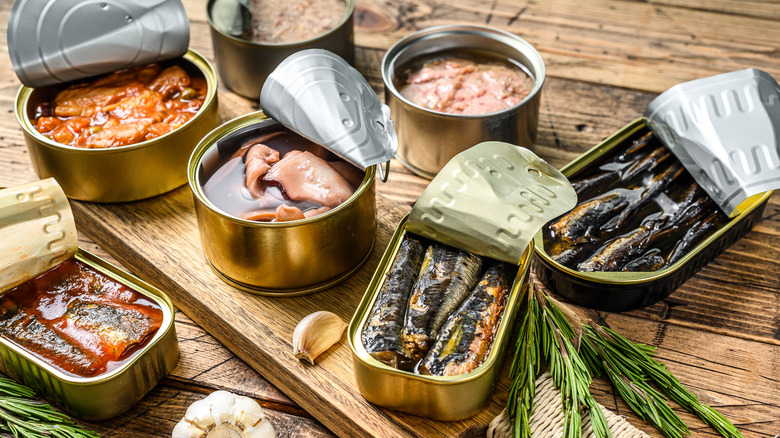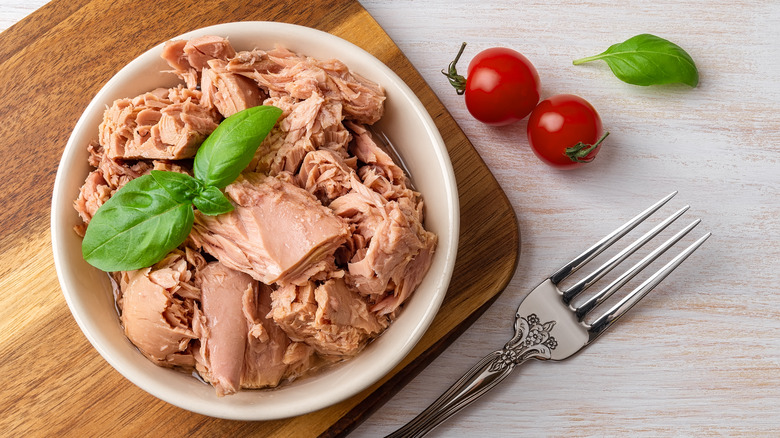Why Canned Fish Comes In Such Small Containers
Compared to other canned foods, the dimensions of most fish and seafood containers might seem surprisingly compact. While the standard five-ounce cans are sufficient for a couple of tuna sandwiches, they are inadequate for feeding a family. Even the larger 12-ounce versions appear diminutive relative to the usual size of nearly any other product. And sardine cans can be even smaller, with a typical one holding just about four ounces. It's important to note that the weight listed includes the water, oil, or other liquid used for packing. Thus, a five-ounce can of tuna contains only about four ounces of the actual fish.
Still, there must be a reason why the tins are so tiny. So, what is it? The most likely answer appears to be consumer demand. While the most popular use for canned tuna is probably a quick sandwich, and sardines are often eaten as a snack straight from the can, it makes sense that the smaller size would be in greater demand. In fact, many tuna brands are offering even more compact containers. At just three ounces, the itty bitty tins are meant for one person to eat on the go. Small containers just make sense for many consumers, especially since storing smelly leftovers like tuna salad isn't high on everyone's list.
What happened to the six-ounce can of tuna?
The five-ounce container hasn't always been the standard for canned tuna. Before the 2010s, tuna typically came in seven-ounce cans. However, a shift occurred due to a price-fixing conspiracy among the major tuna packers, and the reduction in size was never reversed. While consumer demand might be the main reason behind the modestly sized cans of fish, other factors such as profit margins and executive bonuses also play a role.
Interestingly, the former CEO of Bumble Bee Foods LLC — a company that produces various canned seafood and chicken — was convicted of illegal price-fixing in 2019, and a class-action lawsuit awarded $40.6 million to 400,000 households in Washington state who had purchased canned tuna and chicken in 2023. Furthermore, tuna producers faced millions in federal fines. Despite these penalties, tuna packers were never mandated to revert to the original can size. The industry seems content with the current smaller servings of canned fish, indicating they are likely here to stay.
Is it possible to get fish in bigger cans?
While most grocery stores stock only five and 12-ounce containers of canned tuna, larger tins are available. For instance, Costco sells an eight-pack of seven-ounce cans. For those needing even larger quantities, Starkist produces a substantial 66.5-ounce can intended for food service use. Similarly, bulk purchases are possible for sardines, anchovies, and other small fish, though giant containers designed for restaurant use are typically not found in average grocery stores. Anything exceeding a 12-ounce tin of tuna generally requires a visit to a restaurant supply store, which suits the typical consumer who may not wish to consume a large amount of canned fish in one go.
Salmon is an exception in the canned fish category, available in both very small and standard-sized cans. While 3.75-ounce salmon containers are common, larger cans are also frequently stocked by stores. For those needing to serve more people with fewer cans, opting for canned salmon could be a practical choice.



